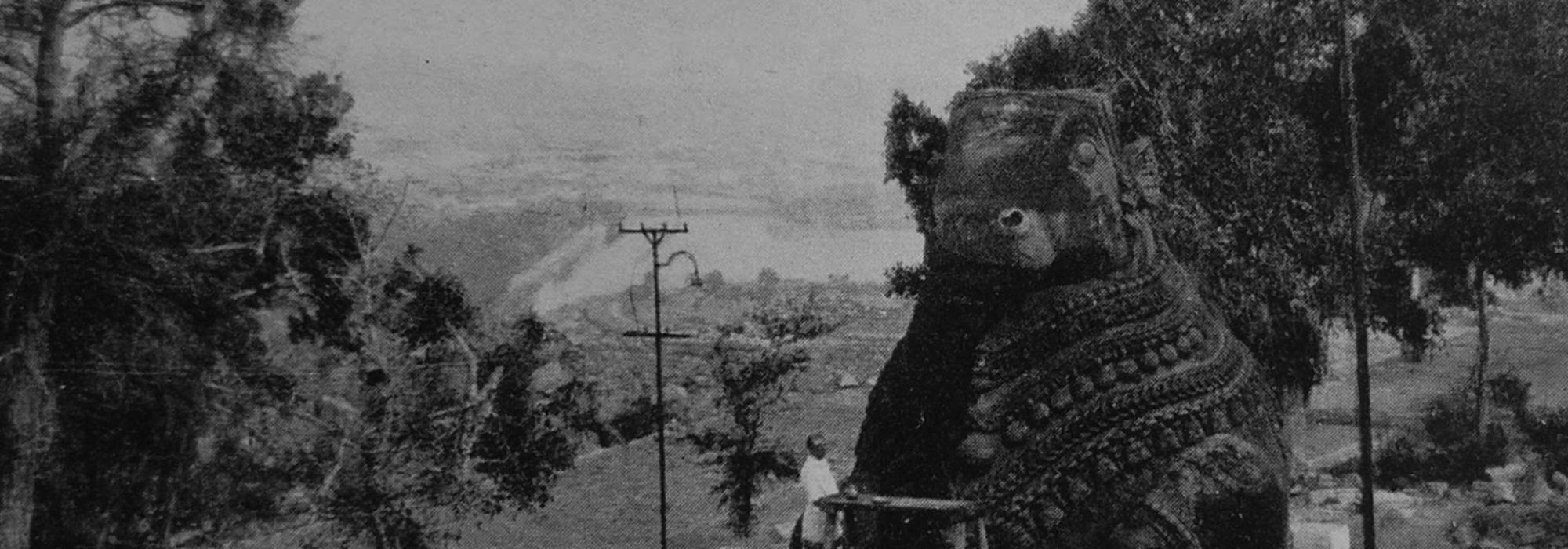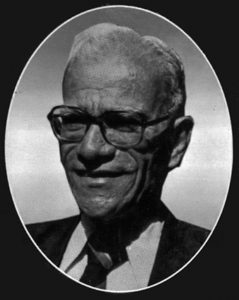A. R. Krishna Shastri, the great savant of Kannada literature, once took a young boy to meet D. V. Gundappa (DVG). The boy, by then, had some articles to his credit. He had even taken a copy of his book for DVG’s perusal. DVG quietly glanced through it, and a whirlwind of questions followed. In order to answer those penetrating questions, the boy had to exhibit his hard-earned, meticulous scholarship. DVG must have been impressed, though there were no visible signs of it, for he moved on to the next topic. It was about a metrical flaw in one of the boy’s poems. Prof. Krishna Shastri came to his student’s rescue immediately: he said that many eminent scholars have examined the book and expressed their approval. DVG didn’t buy this; he wanted the boy to answer. At once, the boy justified himself. He even cited examples from classical poets, which were on the same lines of his construction, to strengthen his argument. This sealed the case. Now DVG was visibly impressed. He took out two books from his shelf – Antahpura Geetegalu and Sri Rama Pareekshanam – and gave them to the boy as gifts. He had written one line each of the following in those books:
ಕೀರು ಕೊಟ್ಟವರಿಗೆ ಈ ಕಾಕಂಬಿ ನೀರು ಮುಯ್ಯಿ
ಪರಮಾನ್ನವಿಟ್ಟವರಿಗೆ ಹುರಿಹಿಟ್ಟಾದರೂ ಕೊಡಬೇಡವೇ?My paltry puffed-rice flour dish in exchange for the choicest sweet dish.
Who is this boy who received such profuse praise from DVG? Of him, Prof. M. Hiriyanna once said, “When it comes to Alankara Shastra, this person can never err.” It is none other than K. Krishnamoorthy, the doyen of Indian aesthetics.
In the past two centuries, ill-willed westerners founded and gave currency to many misconceptions about India. Among them, the foremost is perhaps the following statement by Max Muller: “The idea of the Beautiful in Nature did not exist in the Hindu mind … The Beautiful as such did not exist for them.” (Quoted by William Knight in The Philosophy of The Beautiful.)
Traditional Indian scholars such as Prof. M. Hiriyanna, Prof. Kuppuswami Shastri, P. V. Kane, S. K. De and V. Raghavan, among many others, worked hard to systematically debunk this. They were equally well-versed in English as they were in Sanskrit, and wrote to the foreigners in a language they understood well – English. K. Krishnamoorthy’s name is an integral part of this list. Taking the baton from his predecessors, he worked with a single-minded devotion for the cause of Alankara Shastra (Indian Aesthetics).
Scrupulousness was a feature that stood out in Krishnamoorthy’s personality, and an ever-alert inquisitiveness allowed him to develop remarkable insights in his field of interest. Today, his works have become touchstones to gauge scholarship. A person’s erudition in Alankara Shastra is tested in the light of his knowledge of K. Krishnamoorthy’s works. If he is familiar with them, he is a good scholar; otherwise he isn’t. The same idea was expressed many centuries ago by Bhattoji Diskshita, the famous grammarian, when he wrote of Appayya Dikshita – यत्कृतिबोधाबोधौ विद्वदविद्वद्विभाजकोपाधी ।
Krishnamoorthy was born in 1923 in Keralapura, a small village in Karnataka. Illness and poverty were his companions from birth; unencumbered by them, he set out on his quest after perfection. He had a brilliant academic career at the University of Mysore, and won prizes and gold medals for Sanskrit, English, and Kannada. The academic record set by him in BA (Hons.) examination was a stellar achievement – nobody had secured as much marks in the past twenty years, and it was not bettered in the next eighteen years. In the final examination of his post-graduation, three questions were asked, amounting to hundred marks. They were to be answered in three hours. Krishnamoorthy wrote an eighty-page answer to a single question and added a note at the end of it –“The answers to questions two and three can be found in this answer itself.” (This was recounted by Dr Mahesh Adakoli, a direct student of K. Krishnamoorthy)
An essay he wrote at a tender age of eighteen – अलङ्कारशास्त्रे काव्य-वैविध्य-वाद-विमर्शः – not only won him a prestigious prize but also marked his entry into Alankara Shastra. Then on, he steadily strode forward on the highway of Aesthetics and in the process illumined the path forever.
He was the first person to secure a Doctorate in Sanskrit in Mysore. This was in a time when Mysore housed a host of stalwarts in Sanskrit, and Mysore University had attained worldwide reputation. The circumstances under which Krishnamoorthy obtained his PhD requires mention here. Bombay University had a scheme of conferring doctorate degrees upon competent candidates, with a requirement that their research should be original and independent. Krishnamoorthy grabbed this opportunity at once. In a short span of two months, he wrote his 470-page thesis “Dhvanyaloka and Its Critics” and submitted it to the university. The referees judging his work were impeccable scholars – Bharata Ratna P. V. Kane and Mahamahopadhyaya H. D. Velankar. They awarded the degree without conducting a viva-voce; such was the merit of the work. And this, when Krishnamoorthy, in his thesis, had refuted some of P. V. Kane’s arguments!
In academic pursuits, Krishnamoorthy was extremely thorough. He diligently sought to understand the essential kernels of every topic he studied. This fact is evident from his lucid expositions on difficult concepts of Aesthetics. Though his attention was singularly devoted to Alankara Shastra, he had a good understanding of allied subjects like Tarka (logic), Vyakarana (grammar), Chandas (prosody), and Vedanta (philosophy). Added to this, he was a polyglot, proficient in as many as eight languages, including Latin and German.
From 1959 to 1984, he served as Professor and Head of the Department of Sanskrit in the Karnatak University, Dharwad. Krishnamoorthy was at his prolific best during this period. The critical editions of Vakroktijivita, Dhvanyaloka, and Natyashastra with Abhinava Bharati brought him international reputation. He also brought out some volumes of his independent studies: Some Thoughts on Indian Aesthetics, Essays in Sanskrit Criticism, Studies in Indian Aesthetics and Criticism, and Indian Literary Theories – A Reappraisal. Naturally, many awards and honours followed, the most significant of them being the President’s Certificate of Honour (1978).
Unlike most scholars who kick the ladder that they used to climb, i.e., their mother-tongue, Krishnamoorthy never did so. Kannada language has heavily benefited from his contributions. Apart from authoring monographs like Panini, Banabhatta, Mahabharata, Rasollaasa, Ruchi, Bharatiya Kavyamimamse – Tattva mattu Prayoga, Kannadadalli Kavyatattva etc., he translated into Kannada the seminal works of masters like Bhamaha, Dandin, Vamana, Mammata, Anandavardhana, Kshemendra, and Rajashekhara. All these works are embellished with insightful introductions and copious notes, which are useful to both the learned and laity. Translating poems as poems – i.e., composing in metre and maintaining praasa – Krishnamoorthy stands several light years ahead of other translators. It is not surprising that both native and foreign scholars extolled him.
“… I admire your Kannada style; I admire your insight and sense of accuracy in interpreting; and I admire your courageous resolve to keep close to the verse-forms of the originals.” – D. V. Gundappa
“The author [K. Krishnamoorthy] is well known and esteemed in Europe as a specialist in the field of Alankara Shastra besides S. K. De and P. V. Kane.” – Claus Vogel, Germany
His masterpiece Samskruta Kavya in Kannada, which is a survey of Sanskrit literature, is perhaps the finest in its genre. Written in exquisite prose, it takes the readers on surreal imaginative flights. The purpose of such compendiums, apart from doing justice to the subject-matter, is to inspire its readers into reading Sanskrit. This book, I’m happy to place on record, has been a prime motivating factor in my developing an appreciation for Sanskrit poetry. I am sure there are many others like me.
He authored more than five hundred research papers and guided about thirty PhD students. Also significant among his contributions are the critical editions of unpublished works like Yashodhara Charita, Kavikaumudi, and Subhashita Sudhanidhi. He has also published a Critical Inventory on Ramayana Studies. Because of such works, all students of Sanskrit are indebted to Dr K. Krishnamoorthy. In the words of K. R. Srinivasa Iyengar, “Dr Krishnamoorthy deserves our gratitude for his sustained attempts to popularize Indian aesthetics, not only as a unique discipline in poetic appreciation, but also as a springboard for comparative studies.”
Due to excessive focus on dhvani, aestheticians had banished alankaras (figures of speech) to a back seat. Scholars such as P. V. Kane and S. K. De had popularized this. Krishnamoorthy argued for a holistic approach of appreciating poetry – where all literary elements come together and contribute to the total aesthetic experience – against that of fitting everything into a ready-made rasa-dhvani straitjacket, an approach that was in vogue in those times.
It was K. Krishnamoorthy who argued to accord a rightful place to Kuntaka in Sanskrit Poetics. The following paragraph summarizes the case:
“Alankara Shastra bristles so much with categories, their definitions, minute divisions and subdivisions and hair-splitting classifications that modern scholars like Dr De have remarked in despair that the study of Alankara Shastra is like studying the index of a book and not the book itself. The only two exceptions to this general rule are Anandavardhana and Kuntaka. Though at first sight these writers too are tarred with the same brush, as we find endless divisions of Dhvani and Vakrokti in their classics, a closer study will reveal that the divisions are there only to illustrate a broad philosophy of poetry unknown to normative writers of pre-dhvani period. Yet while Anandavardhana’s new philosophy of poetry was practically adopted by later textbook writers like Mammata and hence won great popularity, Kuntaka’s new stand came to be consigned to unmerited neglect for want of followers. Even a learned author like Vishvanatha dismisses Kuntaka’s vakrokti with a sweeping remark that it is no more than one of the figures of speech, thereby parading his ignorance of the work Vakroktijivita.”
Krishnamoorthy was also one of the few people who analysed western poetry in terms of Indian concepts like rasa (aesthetic experience), dhvani (suggestion), auchitya (propriety), and vakrokti (oblique/indirect expression). In this regard, one can have a look at his essays in Indian Literary Theories – A Reappraisal.
As a mark of respect, he was made the General President of the All-India Oriental Conference held at Rohtak in 1994, an honour bestowed on only the best Sanskrit scholars.
We may conclude with a verse from Dhananjaya’s Dasharoopaka.
कस्यचिदेव कदाचिद्दयया विषयं सरस्वती विदुषः ।
घटयति कमपि तमन्यो व्रजति जनो येन वैदग्धीम् ॥Someone, sometime,
Endowed with Sarasvati’s grace,
Understands a concept; realization dawns on him.
Equipped with this, someone else becomes a scholar.
References
- Ganesh, ‘Shatavadhani’ R. Hudukaata. Mysore: Samvahana Prakashana, 2009. pp 88-110.
- M. Hiriyanna Birth Centenary Volume. University of Mysore, 1972. pp 77-88.
- Sampradaana. Mysore: Dr K. Krishnamoorthy Research Foundation, 2014. pp 166a-166h, 176-182.
- Krishnamoorthy, K., Dhvanyaloka of Anandavardhana. Delhi: Motilal Banarsidass Private Limited, 2016
- Krishnamoorthy, K., R. Krishna Shastri, University of Mysore, 1976.
- Ananda Bharati. Mysore: DVK Murthy Publication. 1995.
- Aestheticians. New Delhi: Ministry of Information and Broadcasting, 2013.












































Comments